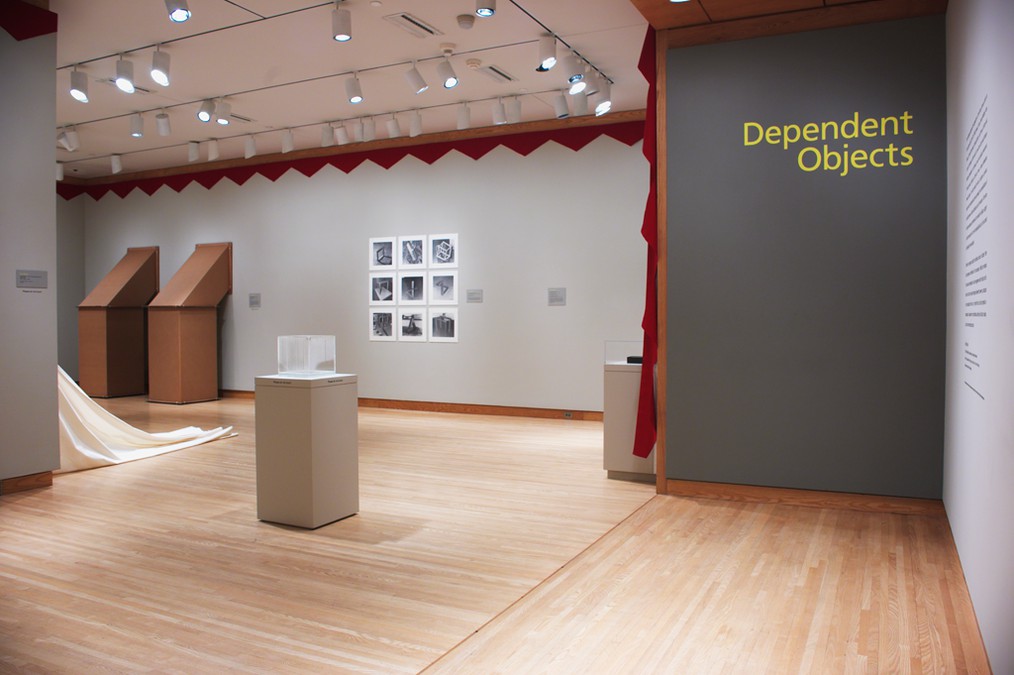By the time Posenenske reached critical and commercial attention in the 1960s, she had rejected that notoriety and retreated from the art world, instead pursuing a career as a sociologist of industrial labor. Her work faded from public memory and the art historical record, and the first presentation of Posenenske’s work in a U.S. museum or gallery did not occur until 2004, when it was included in the Busch-Reisinger Museum exhibition Dependent Objects: Possibilities of Sculpture. The show investigated how work like Posenenske’s pushed the boundaries of sculpture, asking, when does an object become a sculpture and according to what artistic criteria? By deliberately leaving the configuration of her objects up to the consumer, as with the geometric, corrugated cardboard forms seen in the installation shot above, she proposed a system of fabricating and displaying art that challenged a market that values the “original” and rewards singularity. She relinquished creative control of the work once it entered into the consumer’s possession, inviting the consumer to “again and anew participat[e] in the creation” and completion of the work, which was always open to future reorientation.
Dropping Out
Although there is no evidence that Lozano and Posenenske ever met or were even aware of each other, it is conceivable that Posenenske could have encountered Lozano’s work during her visit to New York City in the spring of 1965. Posenenske would have been interested in the newest explorations of Minimalism and what would later be called “Conceptual Art” in the United States, thus she may have encountered work by Lozano, who was part of an artistic circle that included her (now more famous) male peers Donald Judd, Dan Flavin, Richard Smith, and Mark di Suvero. Though they may have never crossed paths or influenced each other’s thinking, they both were interested in “seeking the extremes” and challenging the relationship of the collector (be it private, public, or institutional) to the work of art.
Ultimately, Posenenske came to the conclusion that “art can contribute nothing to solving urgent social problems.”[11] Art historian Jo Applin has argued that Lozano’s “dropping out” seems inextricable from a particular capitalist, goal-driven professionalism, in which an “artist” becomes a professionalized capital-A “Artist.”[12] This logic might be applied to Posenenske as well, who shared in Lozano’s frustration with the professionalization of the “Artist” and the tethering of art’s worth to its monetary value. But whereas Lozano’s withdrawal seems to have been one final, radical leap toward wholly merging life and art, Posenenske’s withdrawal indicates a rejection of utopian notions around art and its relationship to daily life.
The work of Lozano and Posenenske, which, over five decades later, still feels relevant and urgent, reminds us that art does not exist in a vacuum but is imbricated in social, economic, and political systems. In reaching beyond the conventional, these two artists ask us to examine and question the world around us, to test the edges and the margins, to embrace the uncomfortable and unfamiliar. Posenenske and Lozano encourage me, as a curator and historian, not to be part of institutional barriers that would exclude or discourage artists like them, but to instead find ways to highlight work that challenges those barriers, to meet the artist on her terms, and to always explore new possibilities with curiosity and openness.
Lauren Hanson is the Stefan Engelhorn Curatorial Fellow in the Busch-Reisinger Museum at the Harvard Art Museums.
[1] The driving concept for documenta 12 was “The Migration of Form,” for which art director Nigel M. Buergel and curator Ruth Noack posited, “contemporary does not mean that the works originated yesterday. They must be meaningful for people today. Documenta 12 is concerned with both historical lines of development in art and unexpected concurrences.”
[2] Lee Lozano, Untitled, 1970, published in Lee Lozano: Win First Don’t Last, Win Last Don’t Care, ed. Adam Szymczyk (Basel: Schwabe Verlag, 2006), 193.
[3] Lee Lozano, Grass Piece, April 24, 1969, published in Lee Lozano: Notebooks 1967–1970 (New York: Primary Information, 2009), unpaginated.
[4] Lee Lozano, private notebook no. 5, December 1969, p. 8, published in Sarah Lehrer-Graiwer, Lee Lozano: Dropout Piece (London: Afterall Books, 2014), 32.
[5] Although it is not entirely clear when Lozano fully withdrew from her former life, she did cease any active interest in publicly exhibiting her work after 1971. For a thorough and excellent investigation of Lozano’s retreat from the art world, see Sarah Lehrer-Graiwer’s Lee Lozano: Dropout Piece (London: Afterall Books, 2014).
[6] For more on this concept, see the landmark essay by Lucy Lippard and John Chandler, “The Dematerialization of Art,” Art International 12 (2) (February 1968): 31–36.
[7] Lee Lozano, private notebook no. 8, April 1, 1970, pp. 94–95, published in Lehrer-Graiwer, Lee Lozano: Dropout Piece, 74.
[8] Reconstructions of Posenenske’s Relief series are still licensed and produced today by the Charlotte Posenenske Estate, managed by Peter Freeman, Inc.
[9] Charlotte Posenenske, “Statement,” Art International 12 (5) (May 1968): 50. Published in German.
[10] Ibid.
[11] Ibid.
[12] See Jo Applin, “Cut Out, Drop Out,” American Art 31 (1) (Spring 2017): 6–12, and Applin’s Lee Lozano: Not Working (New Haven, Conn.: Yale University Press, 2018).
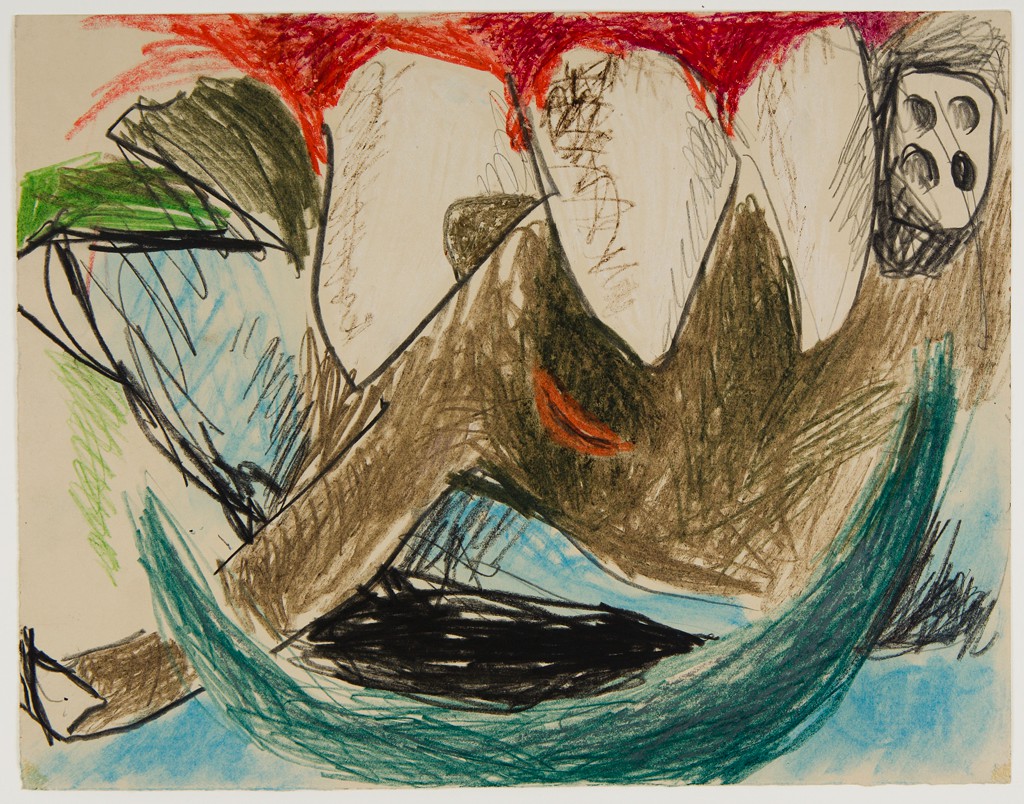
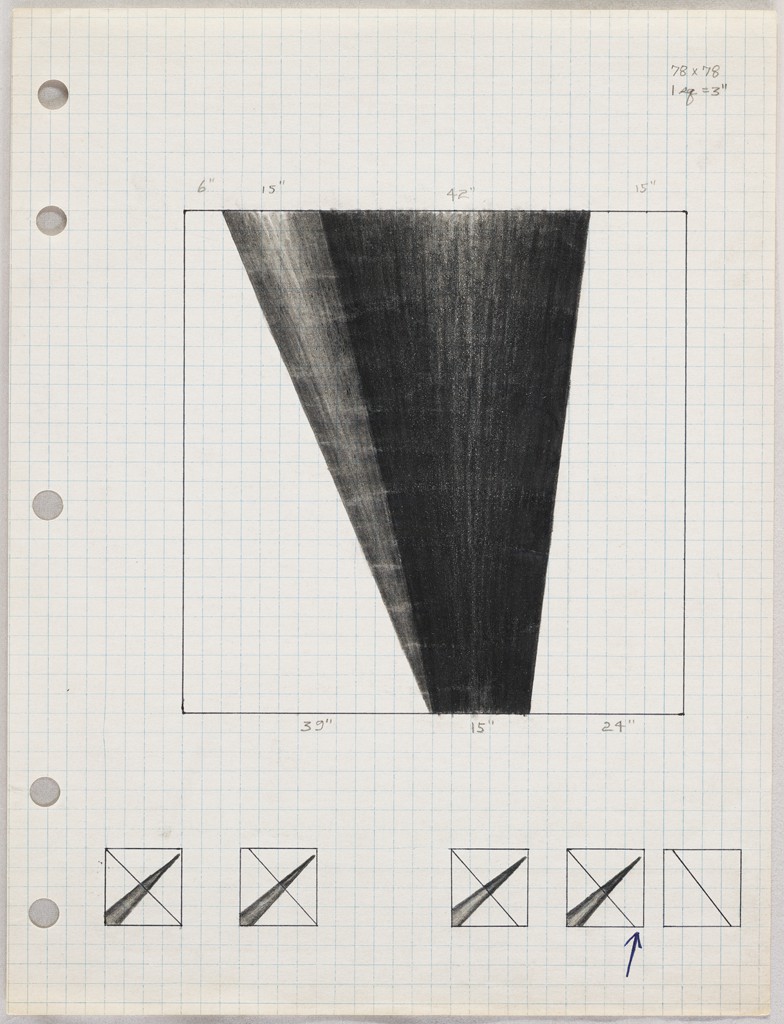
![This drawing consists of block text in black ink from two different pens on a sheet of graph paper. The left edge is perforated, indicating the sheet was carefully torn from a notebook binding. The number “27” is written in the upper right-hand corner. The text reads in capital letters: “Feb, 69/Piece /Do two pntngs on same size stretchers/to be attached back to back. Encase in/clear rigid plastic (crossed out) [caret] ‘Weatherproof’ and hang from [caret] limb of tree/against backdrop of sky so that one pntng/faces east and one west. Compare art and/nature. (To be done some time in the future when there is access/to private property in the country.) / Jan, 69/Piece or (Lace * Piece)/Be the recipient of a grant [caret] without trying. Invest † half of it on the stock/market for at least six months. Pay the rent and/piss away the rest. (Dec. 30, 68) (Jan. 16, 69) / * bread, money † Nat’l Gen’l Corp (NGC), $40 warrants, EXP 9/30/78/(the grant was from Cassandra Foundation, $2,000.)” The following text is in the left margin with an arrow pointing to Lace Piece description: “write up for/poss. inclusion in Dwan Language Show (May 19, 69)”/The body of text continues as follows: “Feb, 69/Withdrawal Piece/Pull out of a show at Dick Bellamy’s to/avoid hanging with work that brings you/down. (Feb. 8, 69)/March, 69/Transistor Radio Piece (March 31, 69) (This piece was initiated by a pathetic and/fatuous remark by Don Judd)*. Listen to a/transistor radio with the antenna pulled/all the way out and the sound turned very/low throughout a panel discussion.* Later I heard a rumor that Judd was drunk./However, the piece still stands.”](https://s3.amazonaws.com/media.harvardartmuseums.org/production/uploaded_files/tour_builder/urn-3%3AHUAM%3A70220_dynmc.jpg?height=675)

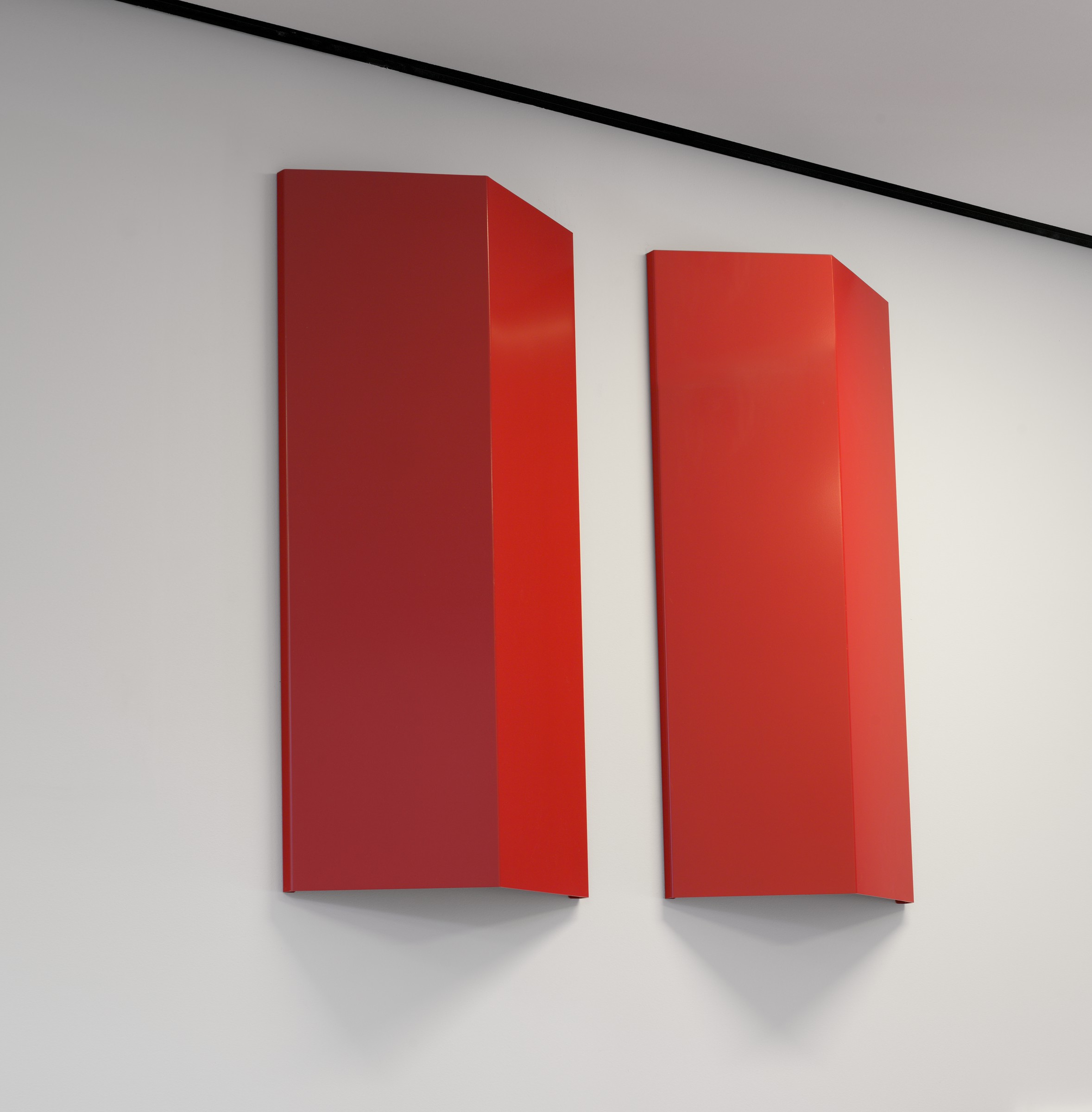

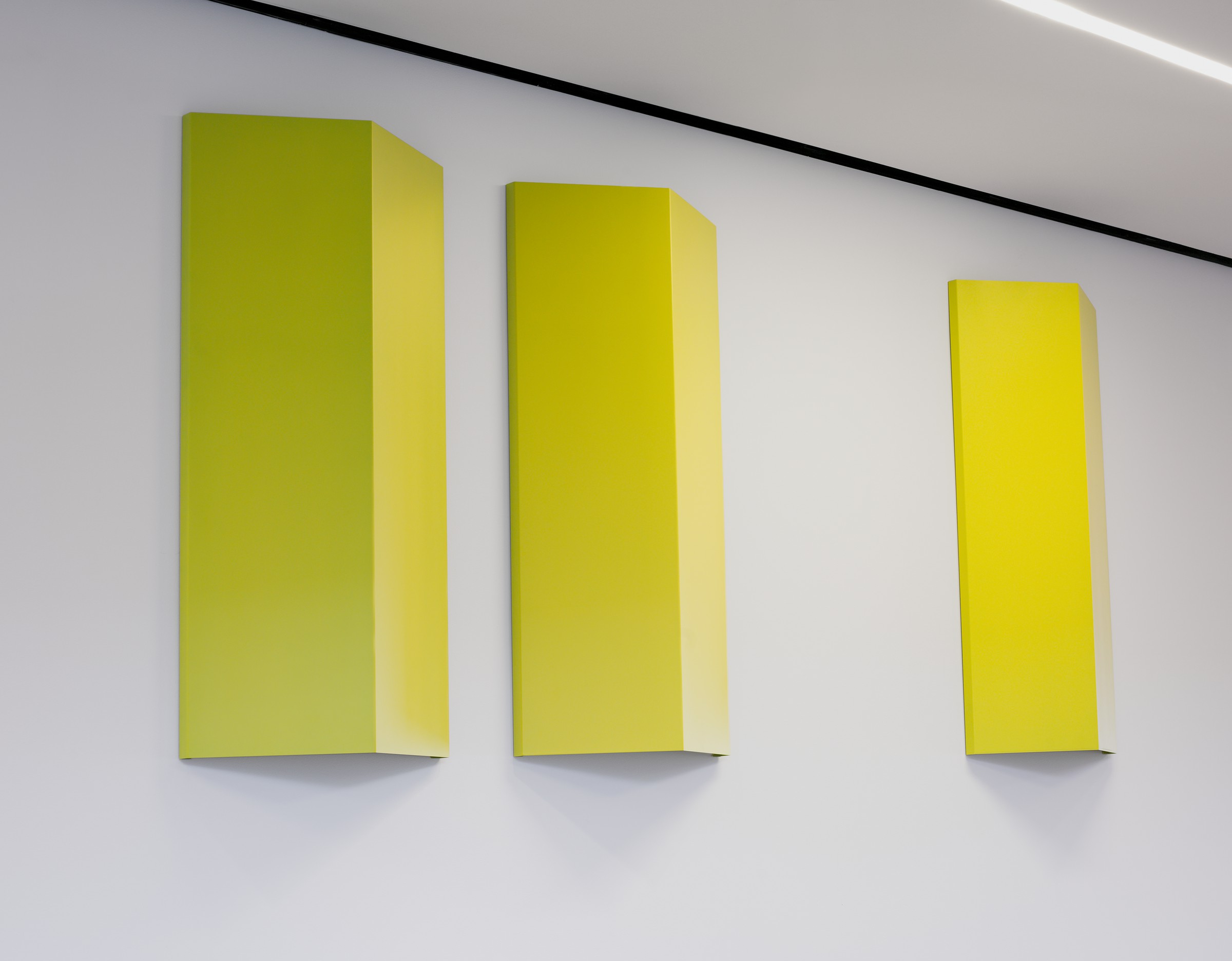
![This schematic rendering depicts five different shapes described in the top row as a “concave arch, convex arch, concave fold, convex fold, [and] 1 short side/1 long side.” A column on the left side provides four color options, “Red, Yellow, Blue, Black,” each with a small square of pigment to illustrate the respective color. A grid of 20 small check boxes appears below the top row and to the right of the left column.](https://s3.amazonaws.com/media.harvardartmuseums.org/production/uploaded_files/tour_builder/o_1ehpppfh533o7q1k15bn738t7.jpeg?height=675)
